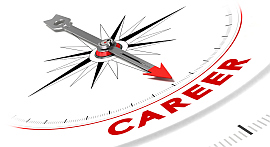
Familiar with the defenestration of Prague? Know the causes of the French Revolution? The AP ® European History exam tests topics and skills discussed in your Advanced Placement European History course. If you score high enough, your AP Euro score could earn you college credit!
Check out our AP European History guide for the essential info you need about the exam:
What’s on the AP European History Exam?
The AP European History exam is 3 hours and 15 minutes long. It is composed of two sections: a multiple choice/short answer section and a a free response section. There are two parts (Part A and Part B) to each section.
|
Timing |
Number of Questions |
Percent of Exam Scor e |
|
|
Section I: Part A |
55 minutes |
55 multiple choice questions |
40% |
|
Section I, Part B |
50 minutes |
3 short answer questions |
20% |
|
Section II, Part A |
60 minutes |
1 document-based |
25% |
|
Section II, Part B |
40 minutes |
1 long essay |
15% |
AP European History Multiple Choice
Multiple-choice questions are grouped into sets of two to five and based on a primary or secondary source, including excerpts from historical documents or writings, images, graphs, maps, and so on. This section will test your ability to analyze and engage with the source materials while recalling what you already know about European History.
AP European History Short Answer
The short answer questions will ask you to identify and analyze historical evidence.
AP European History Document-Based Question (DBQ)
DBQ questions will present you with a variety of historical documents that are intended to show the complexity of a particular historical issue. You will need to develop a thesis that responds to the question prompt and to support that thesis with evidence from both the documents and your knowledge of European history. You should incorporate outside knowledge and be able to relate the issues discussed in the documents to a larger theme, issue, or time period.
AP European History Long Essay
You’re given a choice form two long essay prompts to complete. You must develop a thesis and use historical evidence to support your thesis, but there won’t be any documents on which you must base your response. Instead you’ll need to draw upon your own knowledge of topics you learned in your AP European History class.
What Topics Should I Review?
The College Board is very detailed in what they require your AP teacher to cover in his or her AP European History course. They explain that you should be familiar with the following topics:
- Interaction of Europe and and World: commercial and religious motivations to interact with the world; competition for trade; commercial rivalries; Christianity; social Darwinism; mercantilism; slave-labor system; expansion of slave trade; slave revolt and Haitian independence; national self-determination; extreme nationalist political parties; increased immigration into Europe, anti-immigrant policies; Woodrow Wilson’s political/diplomatic idealism; causes of World War I; Columbian exchange; Marshall Plan; 1929 stock market crash; Cold War outside Europe; responses to imperialism; diplomacy and colonial wars
- Poverty and Prosperity: industrialization; Second Industrial Revolution; French Revolution; Russian reform and modernization; world monetary and trade systems; European economic and political integration; baby boom; the putting-out system; Agricultural Revolution and population growth; mechanization; the factory system; migration from rural to urban areas; critiques of capitalism; evolution of socialist ideology; Russian Revolution; Lenin’s New Economic Policy; Stalin’s economic modernization; fascism; the Great Depression; green parties; revolts of 1968; labor laws and reform programs
- Objective Knowledge and Subjective Visions: revival of classical texts; invention of the printing press; Renaissance art; scientific method; rational thought; theories of Locke and Rousseau; humanism; romanticism; fascist nationalism
- States and Other Institutions of Power: English Civil War; French Revolution; wars of Napoleon; Enlightenment principles; Congress of Vienna; social contract; post-1815 revolutions; nation-building; industrialization; Russian Revolution; constitutionalism; rise of the Nazis; mass media and propaganda; total war; post-1945 nationalist/separatist movements; genocide; imperialism; colonial independence movements; League of Nations; collapse of communism
- Individual and Society: gender roles and marriage patterns; hierarchy and social status; urban expansion; rise of commercial and professional groups; family economy; Napoleon and meritocracy; industrialization and class; destructive effects of technology; religious minorities; social Darwinism
AP European History Periods
The course focuses on the following four key time periods in European History. The questions on the exam will address events from these time periods.
- Period 1: c. 1450 to c. 1648
- Period 2: c. 1648 to c. 1815
- Period 3: c. 1815 to c. 1914
- Period 4: c. 1914 to present
For a comprehensive content review, check out our line of AP guides.
What's a Good AP European History Score?
AP scores are reported from 1 to 5. Colleges are generally looking for a 4 or 5 on the AP Euro exam, but some may grant credit for a 3. Here’s how students scored on the AP European History exam in May 2017:
|
AP Euro Score |
Meaning |
Percentage of Test Takers |
|
5 |
Extremely qualified |
9.3% |
|
4 |
Well qualified |
18.6% |
|
3 |
Qualified |
28% |
|
2 |
Possibly qualified |
31.9% |
|
1 |
No recommendation |
12.1% |
Source: College Board
How can I prepare?
AP classes are great, but for many students they’re not enough! For a thorough review of AP European History content and strategy, pick the AP prep option that works best for your goals and learning style.
Explore Colleges For You
Connect with our featured colleges to find schools that both match your interests and are looking for students like you.
Get Started on Athletic Scholarships & Recruiting!
Join athletes who were discovered, recruited & often received scholarships after connecting with NCSA's 42,000 strong network of coaches.
Best 382 Colleges
137,000 students rate everything from their professors to their campus social scene.



